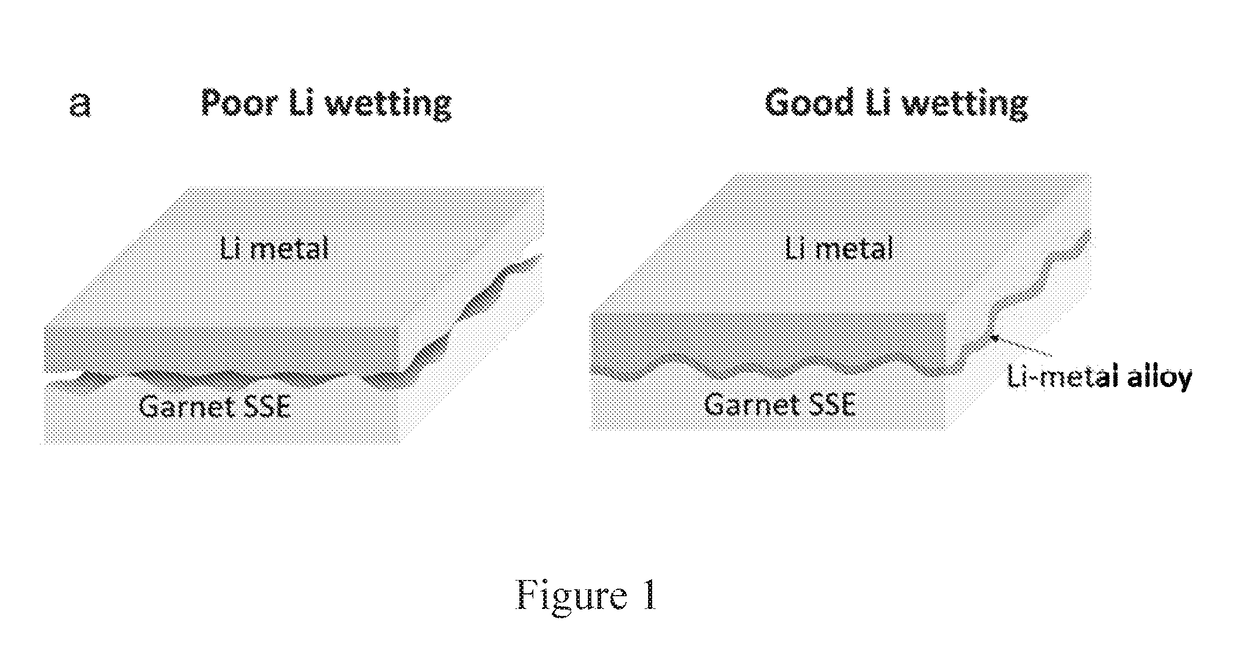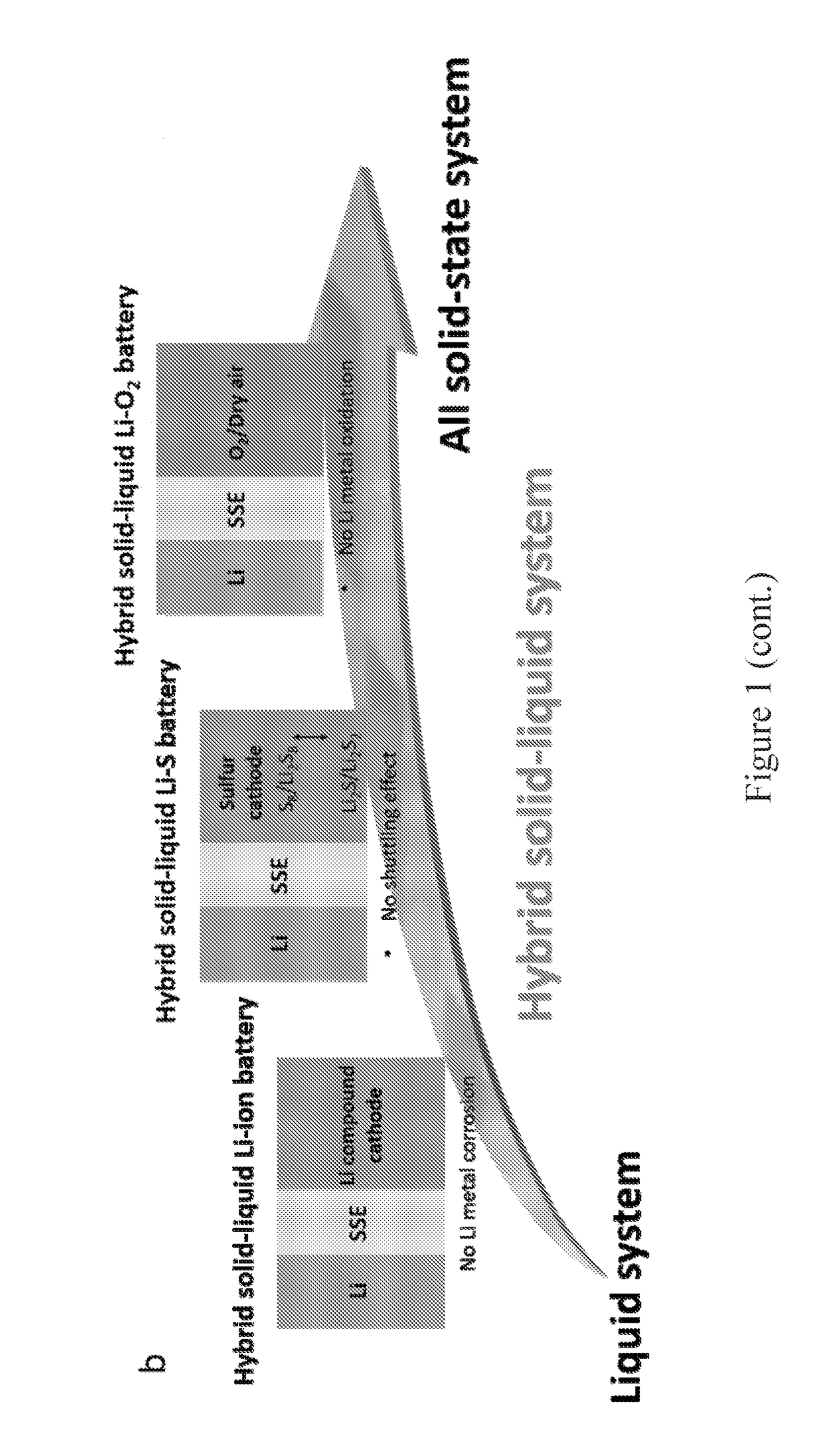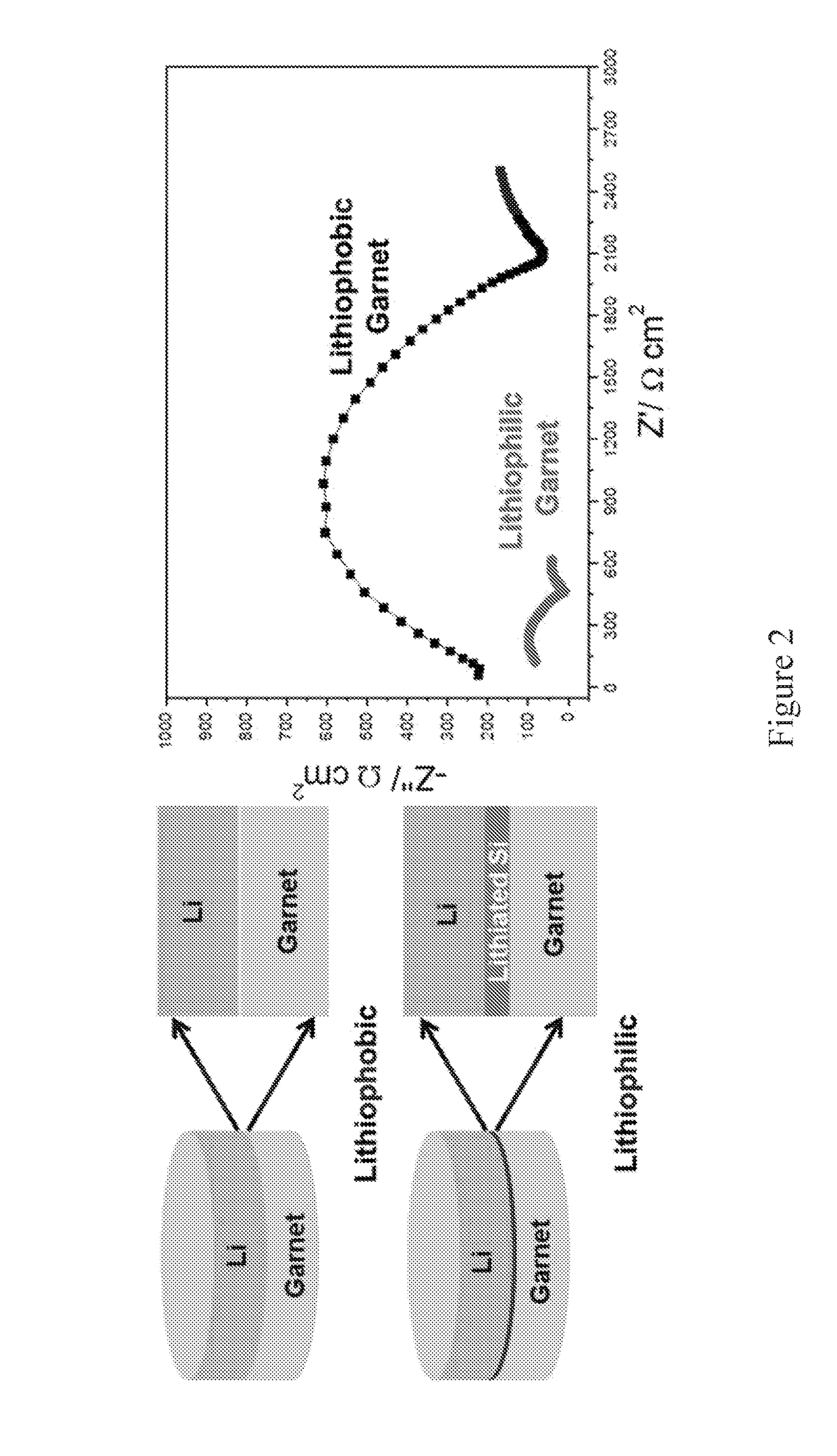Metal alloy layers on substrates, methods of making same, and uses thereof
- Summary
- Abstract
- Description
- Claims
- Application Information
AI Technical Summary
Benefits of technology
Problems solved by technology
Method used
Image
Examples
example 1
[0110]This example provides a description of metal-alloy layers of the present disclosure and methods of making such layers.
[0111]A garnet-structured SSE, the most promising oxide-based SSE, was changed from “super-lithiophobicity” to “super-lithiophilicity” through a thin coating of amorphous Si by plasma-enhanced chemical vapor deposition (PECVD). The wettability transition of SSE is due to the reaction between Li and Si and the in situ formation of lithiated Si. The resulting lithiated Si has high ionic and electrical conductivity, which can act as an interface between Li metal and SSE. Benefitting from this, symmetric cells composed of Si-coated garnet-structured SSE and Li metal electrodes exhibited much smaller impedance and excellent stability upon plating / stripping cycles compared to bare garnet-structured SSE. Our discovery on the switch of lithiophobicity to lithiophilicity for improving the interface may open opportunities for many other SSEs.
[0112]This disclosure demonst...
example 2
[0128]This example provides a description of metal-alloy layers of the present disclosure and methods of making such layers.
[0129]Tin was used as the alloy material with lithium to improve the wettability with garnet. There are several reasons to use tin as the alloy materials: (1), Tin has very low melting temperature (231.9° C.), which will be easier to alloy with lithium at relative low temperature (2, can decompose to Sn metal at around 600° C., which offers an easy way to deposit Sn into a porous garnet in situ. (3), Tin itself is an anode materials with a very high theoretical specific capacity of 994 mAh / g.
[0130]Due to the big difference of surface energy between garnet solid electrolyte and lithium metal, the wettability of garnet surface to melt lithium is very poor, which leads to huge interface resistance for the lithium anode side. In order to improve the surface wettability of garnet, surface modification is necessary. In this work, the solution process was developed to...
example 3
[0139]This example provides a description of a method to increase the Li wettability of a garnet surface.
[0140]To address the challenge that garnet solid electrolytes generally have poor contact with Li metal, which causes high resistance and uneven current distribution at the interface. challenge, we demonstrated a strategy to engineer the garnet solid electrolyte and Li metal interface by forming an intermediary Li-metal alloy which changes the wettability of the garnet surface (lithiophobic to lithiophilic) and reduces the interface resistance by over an order of magnitude: 950 ohm*cm2 for the pristine garnet / Li and 75 ohm*cm2 for the surface engineered garnet / Li. Li7La2.75Ca0.25Zr1.75Nb0.25O12 (LLCZN) was selected as the SSE in this example due to its low sintering temperature, stabilized cubic garnet phase, and high ionic conductivity. This low area specific resistance enables a solid-state garnet SSE / Li metal configuration. Described is a new way to address the garnet SSE wett...
PUM
 Login to View More
Login to View More Abstract
Description
Claims
Application Information
 Login to View More
Login to View More - R&D
- Intellectual Property
- Life Sciences
- Materials
- Tech Scout
- Unparalleled Data Quality
- Higher Quality Content
- 60% Fewer Hallucinations
Browse by: Latest US Patents, China's latest patents, Technical Efficacy Thesaurus, Application Domain, Technology Topic, Popular Technical Reports.
© 2025 PatSnap. All rights reserved.Legal|Privacy policy|Modern Slavery Act Transparency Statement|Sitemap|About US| Contact US: help@patsnap.com



